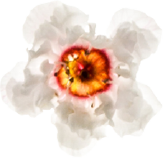



How Is Manuka Honey Produced?
July 20, 2022

Manuka honey is produced by bees collecting nectar from the mānuka plant (Leptospermum scoparium). You may have heard about the numerous benefits of Manuka honey. It contains unique health properties that support digestion, health, and healing. With so many benefits providing so many uses, questions invariably crop up as to how the honey is produced.
Let's Talk About The Origin And Process Of Production Of Manuka Honey.
Origin Of Manuka Honey
Historically, Leptospermum Scoparium was considered a weed, and many years ago, before the discovery of its purported benefits, farmers used to pull Manuka from the fields. This prolific bush-type tree is often the first species to grow upon cleared land and was commonly referred to as the Manuka tree. The flowers it produces contain a genetic makeup that makes them stand out for their anti-bacterial activity among other types of honey. When the honey bee arrives to pollinate with the flowers, it takes that sweet nectar away to their hives to store in their honeycombs.
The Manuka plant only flowers for 2 to 6 weeks of the year, which makes the presence of genuine Manuka honey relatively rare. This fact makes Manuka honey one of nature’s unique gifts of all time.
Process Of Making Manuka Honey
- The Manuka pollination process that will eventually create honey is undertaken by the western honey bee (also known as European honey bee) – the most common bee species worldwide.
- Once the honey bees start their collection of pollen and nectar, they pollinate with the flower. A whole colony will stay until the nectar supplies have dried up, helping to get the most out of the flowers they pollinate with.
- Honey bees have a second stomach to store the collected nectar in (think backpack), which provides an opportunity for it to mix with the enzymes that allow for long-term storage.
- Once the process is complete, the honey bee will fly back to the hive and pass the materials they’ve procured from the flowers to worker bees. This is done by regurgitating the nectar into the mouth of the worker bee, who will then place the nectar into a honeycomb built exclusively for its storage.
- During the early stages of storage, the nectar still contains a large concentration of water, so the bees will push the evaporation process along by moving their wings and then seal up the honeycomb with liquid taken from its abdomen, creating what we commonly call beeswax.
- Just when the plants start to flower, the beekeepers place their hives into these Manuka-growth areas to acquire Manuka honey. The foraging area around a beehive can extend for around two miles, which makes it crucial to identify which areas have an abundant growth of Manuka.
- As Manuka trees only experience a flowering season of 2-6 weeks, timing plays a significant role in the production process.
Healthhyy5ive's Manuka honey is pure with no additives, which makes it more special. Made by bees that collect nectar from the Mānuka tree, the essence of this liquid gold is delivered just as nature intended.It is extensively researched and recognised for its remarkable natural qualities.
Healthhyy5ive follows the bona fide procedure of honey production and delivers nature’s best gift in the most luxurious form.






